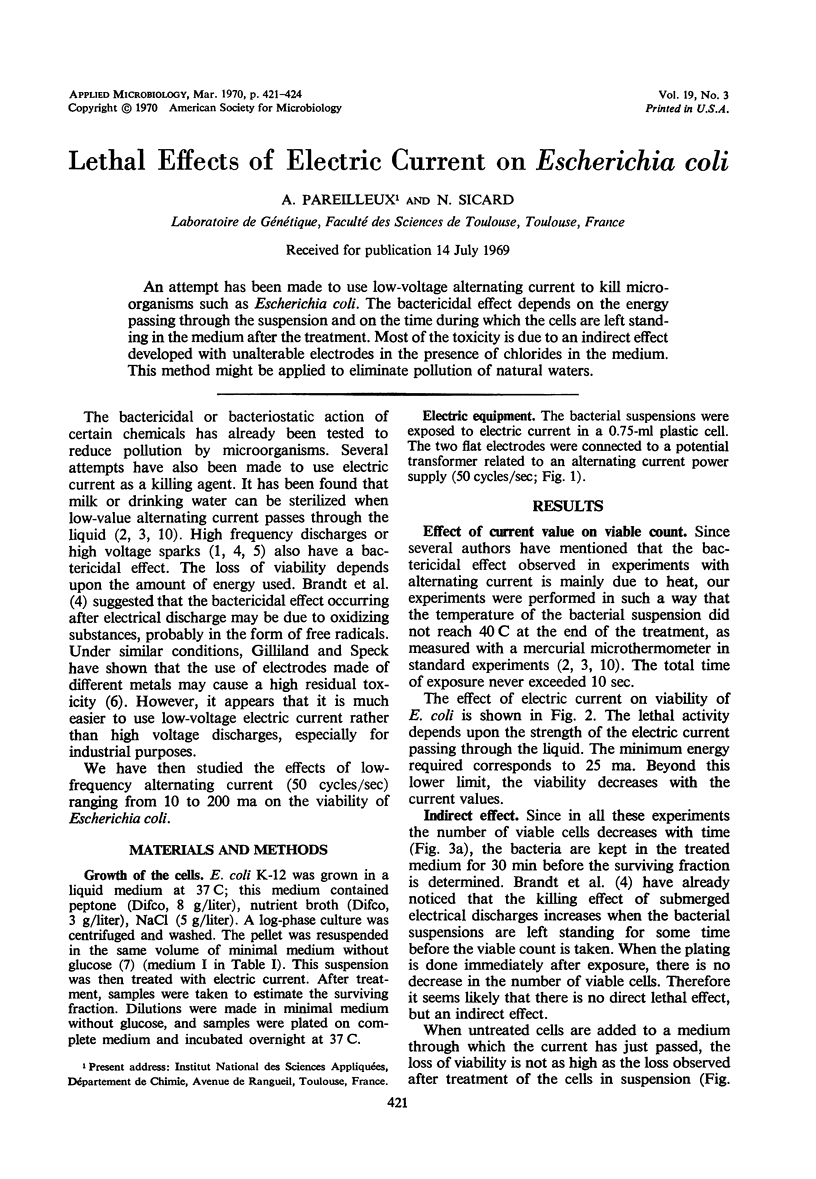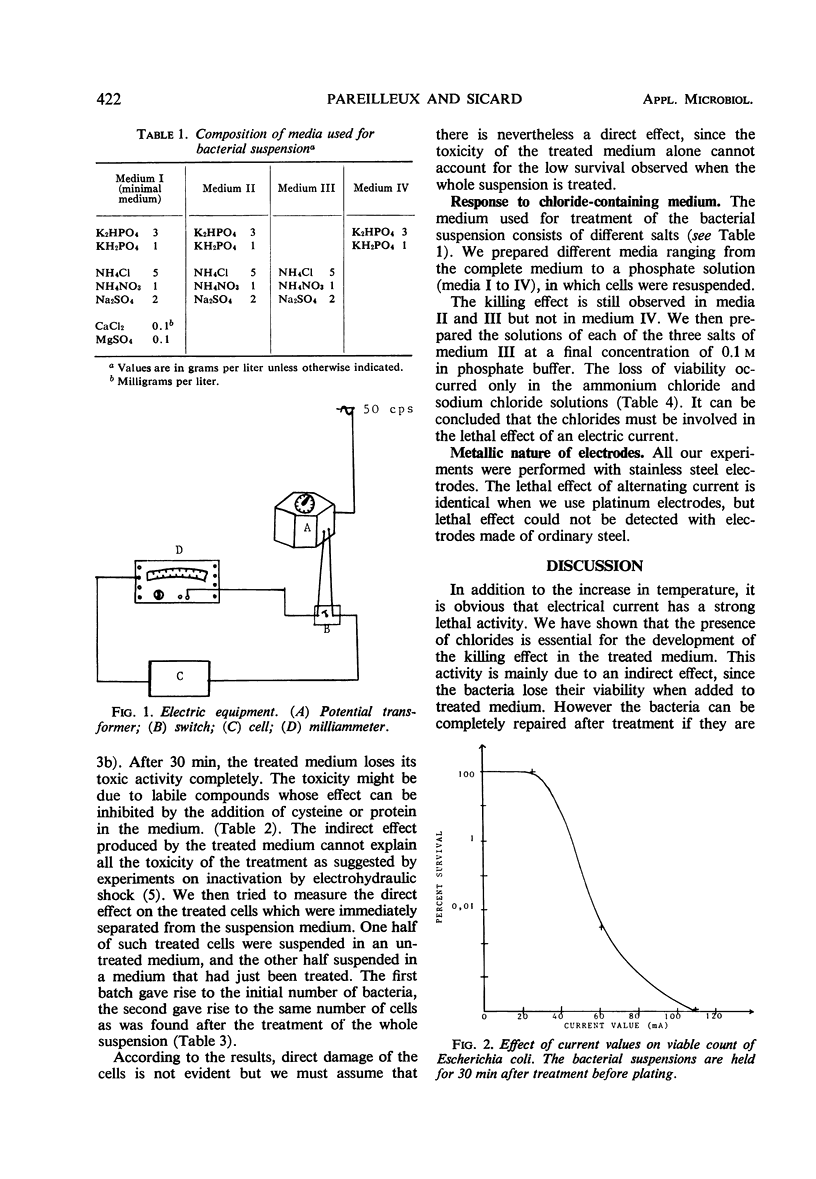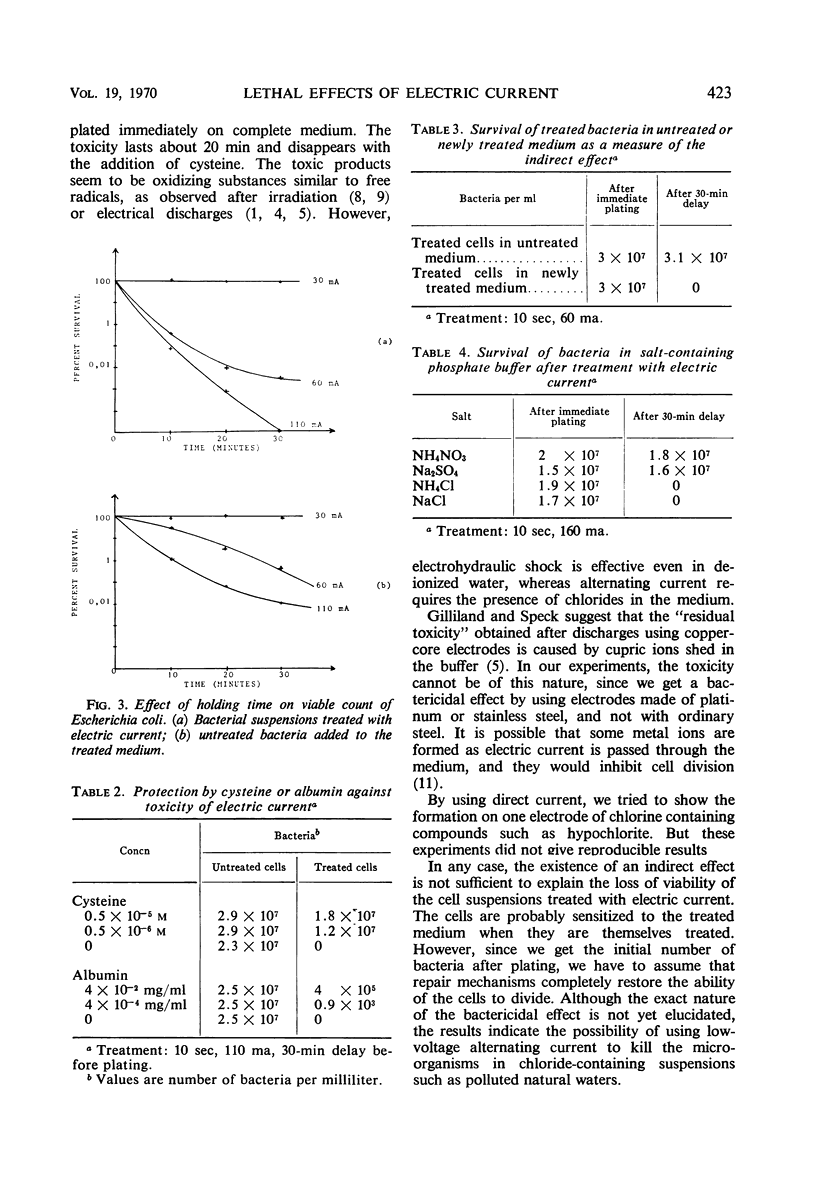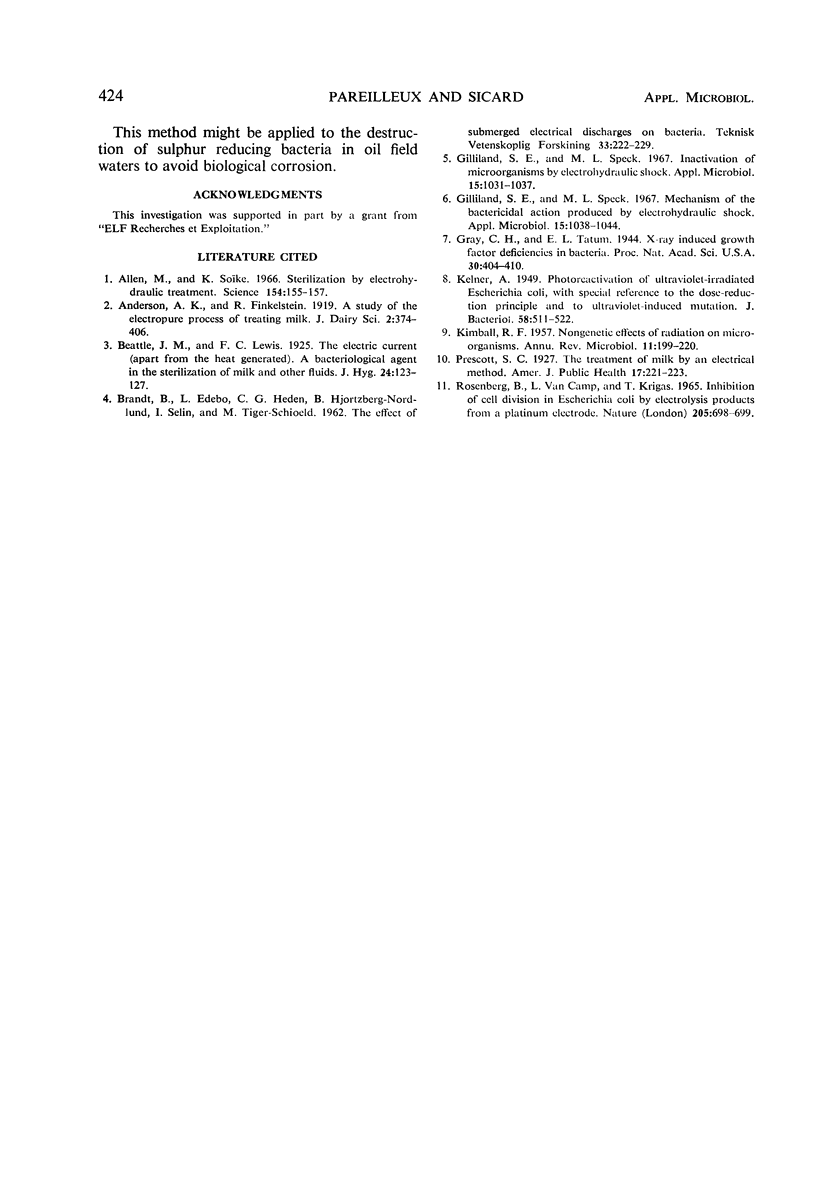Abstract
An attempt has been made to use low-voltage alternating current to kill microorganisms such as Escherichia coli. The bactericidal effect depends on the energy passing through the suspension and on the time during which the cells are left standing in the medium after the treatment. Most of the toxicity is due to an indirect effect developed with unalterable electrodes in the presence of chlorides in the medium. This method might be applied to eliminate pollution of natural waters.
Full text
PDF



Selected References
These references are in PubMed. This may not be the complete list of references from this article.
- Allen M., Soike K. Sterilization by electrohydraulic treatment. Science. 1966 Oct 7;154(3745):155–157. doi: 10.1126/science.154.3745.155. [DOI] [PubMed] [Google Scholar]
- Gilliland S. E., Speck M. L. Inactivation of microorganisms by electrohydraulic shock. Appl Microbiol. 1967 Sep;15(5):1031–1037. doi: 10.1128/am.15.5.1031-1037.1967. [DOI] [PMC free article] [PubMed] [Google Scholar]
- Gilliland S. E., Speck M. L. Mechanism of the bactericidal action produced by electrohydraulic shock. Appl Microbiol. 1967 Sep;15(5):1038–1044. doi: 10.1128/am.15.5.1038-1044.1967. [DOI] [PMC free article] [PubMed] [Google Scholar]
- Gray C. H., Tatum E. L. X-Ray Induced Growth Factor Requirements in Bacteria. Proc Natl Acad Sci U S A. 1944 Dec 15;30(12):404–410. doi: 10.1073/pnas.30.12.404. [DOI] [PMC free article] [PubMed] [Google Scholar]
- KIMBALL R. F. Nongenetic effects of radiation on microorganisms. Annu Rev Microbiol. 1957;11:199–220. doi: 10.1146/annurev.mi.11.100157.001215. [DOI] [PubMed] [Google Scholar]
- Kelner A. PHOTOREACTIVATION OF ULTRAVIOLET-IRRADIATED ESCHERICHIA COLI, WITH SPECIAL REFERENCE TO THE DOSE-REDUCTION PRINCIPLE AND TO ULTRAVIOLET-INDUCED MUTATION. J Bacteriol. 1949 Oct;58(4):511–522. doi: 10.1128/jb.58.4.511-522.1949. [DOI] [PMC free article] [PubMed] [Google Scholar]
- Prescott S. C. THE TREATMENT OF MILK BY AN ELECTRICAL METHOD. Am J Public Health (N Y) 1927 Mar;17(3):221–223. doi: 10.2105/ajph.17.3.221. [DOI] [PMC free article] [PubMed] [Google Scholar]
- ROSENBERG B., VANCAMP L., KRIGAS T. INHIBITION OF CELL DIVISION IN ESCHERICHIA COLI BY ELECTROLYSIS PRODUCTS FROM A PLATINUM ELECTRODE. Nature. 1965 Feb 13;205:698–699. doi: 10.1038/205698a0. [DOI] [PubMed] [Google Scholar]


